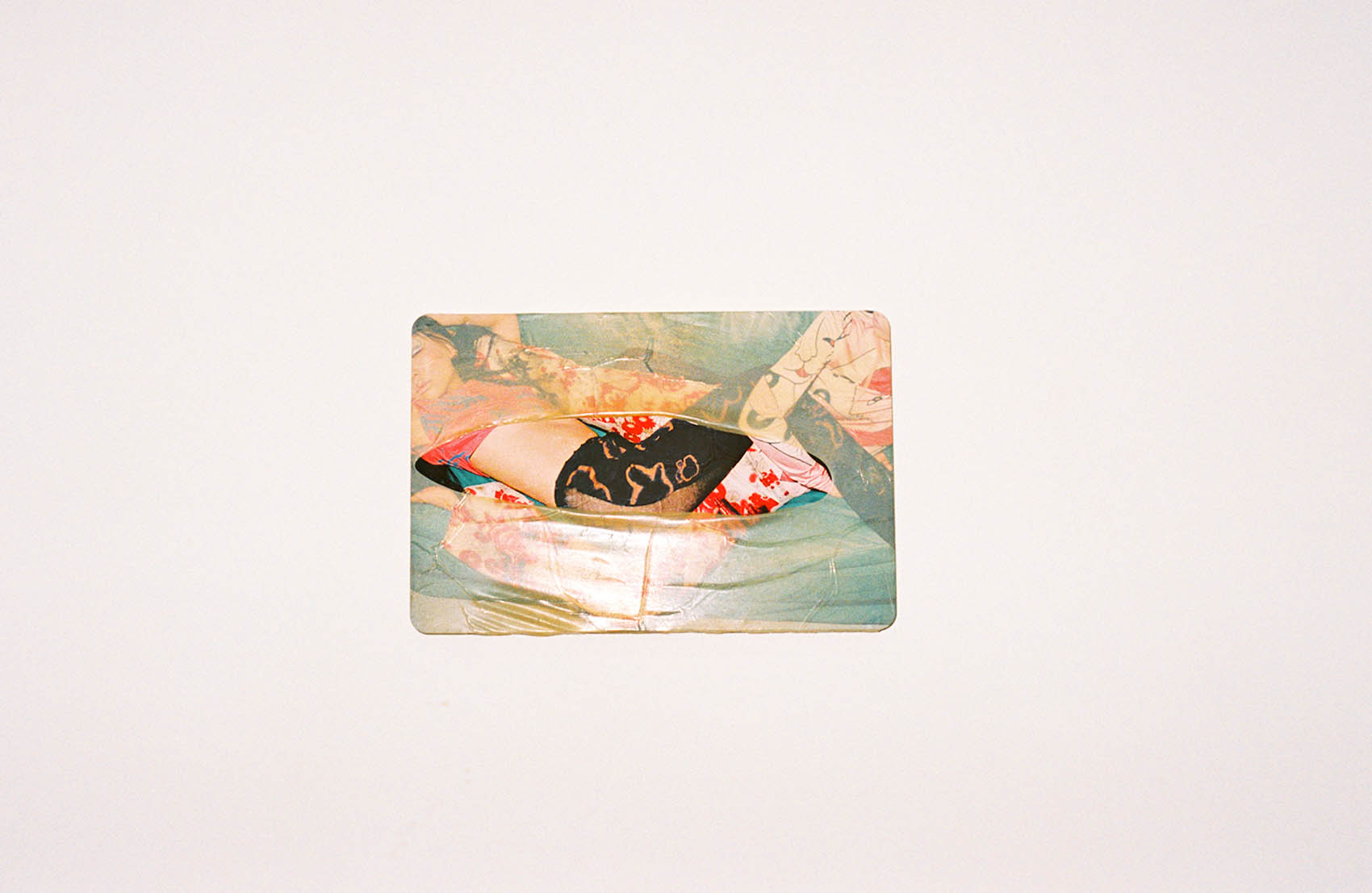Maya Fuhr Wants You to Experience Compersion
Maya Fuhr has always tangled with the subversive and forbidden. Born in Victoria but now living in Los Angeles, the artist first established herself as a photographer shooting cult figures like John Waters and Brooke Candy for culture magazines such as Interview and King Kong and collaborating with Miu Miu and Chanel. Her analogue, direct-flash photographs are glamorous, erotic, and uncanny. But her subjects look shiny, almost like plastic—and that’s Fuhr’s intention. Her lifelong obsession with the plastic—or latex, more specifically—is the subject of Compersion, her first solo show at Gallery Sade in Los Angeles.
Compersion refers to the feeling of happiness you experience when your partner interacts romantically with another person. And in Fuhr’s world, viewers are voyeurs. She refers to her production technique as “edging.” She preps the sculptures by first producing her own latex and then rubbing it onto erotic photographs sourced from her professional photo archive—of people, their parts, and even her own birth. Once the latex has been applied to the image, she peels off several coats of handmade rubber to reveal superimposed images. This process evokes her own fetishism and creates a safe space for all to explore—and embrace—their desires.
How did the show come to be?
Maya Fuhr: It kind of started with my discovery of obsessively fabricating my own latex. I’ve always been into latex. When I discovered I could actually start fabricating compersion—I’m using it both for the polyamorous definition, but I don’t want to just focus on that. It’s also a Buddhist term where you take joy out of seeing other people happy when it doesn’t benefit you. I think that’s just like a very healing way to live life. Through my art, I really want to experience compersion, where I actually see people enjoying my art and interacting and feeling it, but also other people in the gallery, to see them experiencing joy and desire. So I’m really creating a safe queer space for people to explore their own compersion and get a sense of the fetishes or desires that they’ve never had access to.


I love that idea, that there’s healing in the erotic.
Maya Fuhr: It’s so healing seeing other people just feel things. There’s something really healing and beautiful about giving permission to have that in public space as well.
Where did your interest in latex come from?
Maya Fuhr: Firstly, it’s the safety it provides. I first tried on latex when I was 19 in Montreal. It does definitely feel like armour and like a second skin, where there’s this protection and like no one can penetrate through you. In my younger years, like when I was a teenager, I had lots of personal experiences where sometimes touch was uninvited and and didn’t feel good.
So definitely there’s that protection element.
But it’s funny, I grew up in Victoria, B.C., my mom is super environmentalist, and plastic was a forbidden material. So when I left my house and went to Montreal, I remember finding little plastic purses in Value Village, and I just became obsessed with plastic. I was really drawn to how unusual it was for me, because it was something I wasn’t really allowed. This show is also very much inspired by a photograph that I’ve always wanted to show in an exhibition. It’s my dad’s picture of me [being born]. So I came out of the womb, and [I felt] plastic latex gloves and a hard flash on my face. It’s like that shiny, bright feeling I’m obviously addicted to, if you look at my photographs. Freud would talk about rubber fetishes as like reverting back to the womb.



You’re also a fashion photographer. How do you square your environmental upbringing with the excess and glamour of the fashion industry?
Maya Fuhr: Well, it’s all escapism, really. Like, latex is totally an escape from reality. And fashion, when I was in high school, I would always be skipping, and one of the things I would do is go to Chapters and look at fashion magazines. [I thought] when I’m out of school, I’ll get to dress crazy and do these things. So it’s definitely the escape I was drawn to. I also discovered really early in my career that fashion was an excuse to get my ideas across. Because I would pitch to Vice magazine, and I’d be like, “Oh, I want to shoot these individuals who collect things, because I’m so curious about humans.” And then it was like, “Oh, if I pitch it as a fashion story, then it’ll be seen.”
This interview has been edited and condensed.




